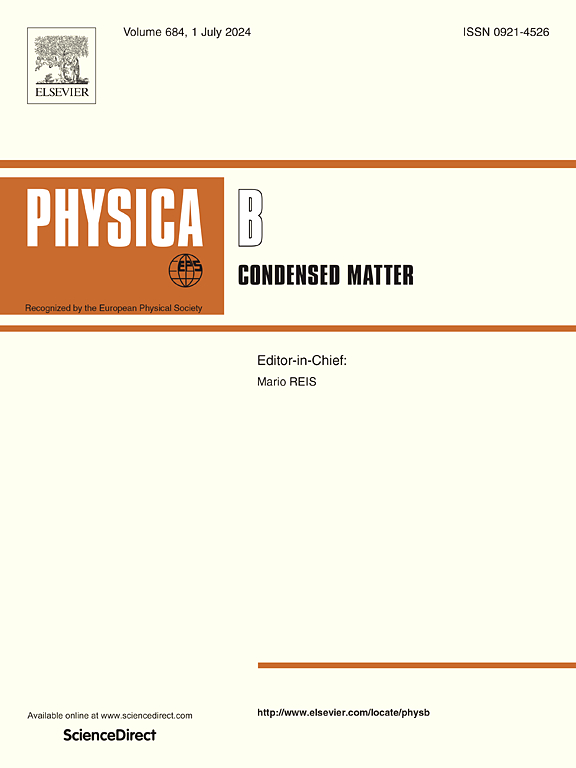二维材料纳米带中二聚体线相关带隙和机电相关
IF 2.8
3区 物理与天体物理
Q2 PHYSICS, CONDENSED MATTER
引用次数: 0
摘要
本研究研究了由石墨烯和后石墨烯二维材料制成的扶手椅纳米带(ANRs)的二聚体线相关的电学和力学性能。我们开发了一个基于二聚体数量的通用方程,该方程基于Pandya-Jha公式,使用紧密结合近似与电子-声子相互作用理论来预测和控制重要参数,如带隙,弹性模量,表面质量密度和声子速度。观察到的二聚体线与带隙和弹性模量之间的反比关系为anr提供了重要的设计原则,允许对这些材料进行精确优化,以满足需要电子功能和机械稳健性的设备。我们的理论预测,已经通过建立的计算方法(LDA, GW, DFT)验证,与观察到的实验结果之间的强相关性表明了这种基于二聚体线的方法的实际意义。这项工作为加速基于anr的柔性传感器、NEMS器件和节能晶体管的发展建立了一个重要的框架,从而增强了二维纳米材料电子学新兴领域的理论基础和计算设施。本文章由计算机程序翻译,如有差异,请以英文原文为准。
Dimer lines-dependent bandgap and mechano-electronic correlations in nanoribbons of 2D materials
This study investigates the dimer lines-dependent electrical and mechanical properties of armchair nanoribbons (ANRs) derived from graphene and post-graphene 2D materials. We have developed a general equation based on the number of dimers, rooted in a Pandya-Jha formulation, that uses the tight-binding approximation in conjunction with electron-phonon interaction theory to predict and control important parameters such as bandgap, elastic modulus, surface mass density, and phonon velocity. The observed inverse relationship between dimer lines and bandgap and elastic modulus offers a significant design principle for ANRs, allowing for the precise optimization of these materials for devices requiring electronic functionality and mechanical robustness. The strong correlation between our theoretical predictions, which have been validated against established computational methods (LDA, GW, DFT), and the observed experimental findings demonstrates the practical significance of this dimer-line-based approach. This work establishes a significant framework for accelerating the advancement of ANR-based flexible sensors, NEMS devices, and energy-efficient transistors, thereby enhancing the theoretical foundations and computational facilities available for the emerging field of 2D nanomaterial-based electronics.
求助全文
通过发布文献求助,成功后即可免费获取论文全文。
去求助
来源期刊

Physica B-condensed Matter
物理-物理:凝聚态物理
CiteScore
4.90
自引率
7.10%
发文量
703
审稿时长
44 days
期刊介绍:
Physica B: Condensed Matter comprises all condensed matter and material physics that involve theoretical, computational and experimental work.
Papers should contain further developments and a proper discussion on the physics of experimental or theoretical results in one of the following areas:
-Magnetism
-Materials physics
-Nanostructures and nanomaterials
-Optics and optical materials
-Quantum materials
-Semiconductors
-Strongly correlated systems
-Superconductivity
-Surfaces and interfaces
 求助内容:
求助内容: 应助结果提醒方式:
应助结果提醒方式:


